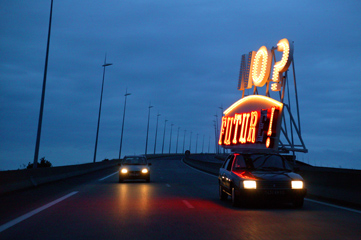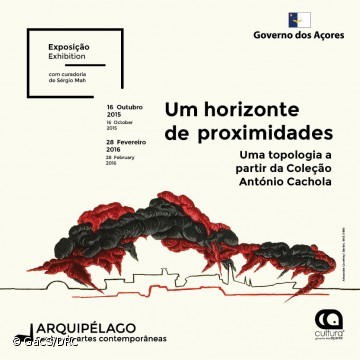SMOKE AND MIRRORS
Illusion. Mirrors and blue smoke, beautiful blue smoke rolling over the surface of highly polished mirrors, first a thin veil of blue smoke, then a thick cloud that suddenly dissolves into wisps of blue smoke, the mirrors catching it all, bouncing it back and forth.
Jimmy Breslin
I don’t think when I make love.
Brigitte Bardot
This is the first episode of a narrative in three acts being told in the Cristina Guerra Contemporary Art, BES Arte e Finança and Appleton Square.
In this exhibition the plot is developed around a very well-known expression – Smoke and Mirrors – inspired by the illusions that magicians perform and which is metaphorically used to describe, among other things, deception, fraud and superficiality. Here it is related to João Louro’s central themes, namely the glamour of contemporary society and consequently its critical approach.
All of the works in this exhibition at the same time as being a reflection on important issues in the artist’s work are simultaneously concurrent to the meaning stated here, constructing a structure destined for illusion and immersion. The tradition of these spaces is long, and nowadays their effects are still being debated. In their association to art they go back to the galleries of Pompeii, where the walls were painted with the Bacchian rites that it was thought induced the observer/participant into a drunkenness of senses and a torpor that affected rational capacity in order to benefit delight in pleasures. In philosophy the allegory of Plato’s cave is more than well known, in which men were fooled by the shadows that they believed to be reality, immersed in the ignorance of a device precisely created for that effect and which some critics have associated to a cinema hall.
Art, love, the cinema, literature, drugs or the world of fashion (fundamental references in this exhibition) all participate in this enormous universe of the simulacrum, made to “fool” reality, proposing another world in which the subject can immerse himself. This narcotic effect of immersion presupposes a total submission of the body, of the senses and of the mind, enjoying the wonderful effects of ecstasy, power, fame or beauty.
This is one of the meanings of João Louro’s invitation and is one of the reasons for including the work exhibited referring to the “molecule of love”: MDMA (the abbreviation for metylenodioximetamphetamine). This work is also related to another one, in which the game of words is taken from the title of Roger Vadim’s film, Et Dieu Créa la Femme (1956), starring Brigitte Bardot, one of Louro’s muses and the personification of sensuality. Baudelaire stated about women in Artificial Paradises: “Evil minds will find it singular, and even impertinent, that a painting of artificial voluptuousness is dedicated to a woman, the most common source of natural voluptuousness. (…) The woman is the being that projects the biggest shadow and the greatest light in our dreams. The woman is fatally suggestive; she lives in another life besides her own: she lives spiritually in the imaginations she frequents and fecundates”. Bardot also protagonises the fleetingness and ephemeral nature of fame and beauty, important issues, expressively reflected to the contemporary condition in one of its fundamental elements: fashion … the crucial subject in this exhibition. Live fast, die young.
In this field the mirror has a lot to say. The object of Narcissus, of eternal contemplation of egocentric beauty and which makes is also an object of death and capture. To concentrate only on our reflection is to ignore the world around us, which may lead us to the “devil’s door”. However, just as in Louro’s Blind Images, this surface may be the place of emptiness or alternately the place of all possibilities, in trying to understand their use, using our image bank. To do so it is enough to possess the curiosity to question and research into their statement.
Cardinal sins also inhabit this universe. This little cave of vanities is populated (just like the halls of mirrors in fairgrounds that increase, shrink or deform reflections) not just by great works but also by little and intimate ones, the characteristics of which lead to a different type of reflection.
In fact, all of this is a great journey to the Self, supported on the great appearances of the world. In this sense this space is also a hall of games: between associations of phrases and words, between meanings, between opposite states. Between fascination and repulsion.
There is another alternative in this gallery of mirrors and illusions without being immersion in a loss with no return or the careless diversion consisting of a return to consciousness, the critical capacity necessary for all the “inhabitants” of the contemporary world. Any of these possibilities is related to the artist’s modus operandi: to give frames for the observer to question himself, discover and make of the images that he (doesn’t) see(s) his own in interpreting them. As Baudelaire states: “Good sense tells us that things of the earth have little existence, and that true reality is only in dreams. In order to digest natural happiness, as well as the artificial one, you first have to have the courage to swallow it (…)”.
Thus in this gallery of mirrors each person sees their own reflection, immersed (or not) in illusions … those we create or are created for us.
What does one feel? What does one see? Wonderful things, isn’t it so? Extraordinary spectacles? Is it beautiful? It is terrible? Is it dangerous? (…) Imagine the drunkenness (…) like a prodigious country, a vast theatre of sleight of hand and of conjuring, where everything is miraculous and unforeseen.
Carla Utra Mendes
http://www.cristinaguerra.com/
![SMUGGLING [solo show]](https://joaolouro.com/wp-content/uploads/2016/11/05-720x540.jpg)


![Silence Will Save Us [solo show]](https://joaolouro.com/wp-content/uploads/2018/04/Silence-will-save-us-720x540.jpg)